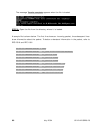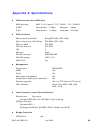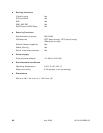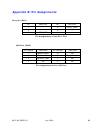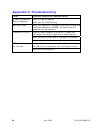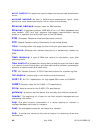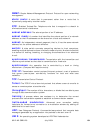100 July 2004 6212-A2-GB20-20
PVC: Permanent Virtual Circuit. Virtual circuit that is permanently established.
QoS:
Quality of Service. The expected data loss or latency.
remote access: Communication from a remote location or facility through
a data link.
remote digital loopback test: This test loops the remote digital
receiver output back into the transmitter input.
remote host: The computer receiving the network commands.
RFC: Request for Comments. Documents published by the Internet
Engineering Task Force pertaining to Internet protocols and policies.
RIP: Routing Information Protocol. The protocol governing the exchange of
routing information.
RJ11: A 6-position jack used with dial networks and telephone sets.
RJ45: An 8-position jack used with programmable dial networks.
router: Protocol-dependent device that connects subnets together. Routers
operate at the network layer (layer 3) of the ISO Open Systems
Interconnection--Reference Model.
routing table:
A table that lists routing paths to enable a node to route
traffic to another node in the network.
RS-232: a low-speed, 25-position, DCE/DTE interface.
server: Hardware or software that offers a specific service, such as database
management, to a client.
SHDSL: Symmetric High Bit Rate Digital Subscriber Loop. A DSL technology
that allows symmetrical transmissions over longer distances. Defined by the
G991.2 ITU standard.
SLA: Service Level Agreement. A contract between a service provider and a
customer, which guarantees a minimum level or quality of service to the
customer.
SMTP:
Simple Mail Transport Protocol. A protocol used to transfer e-mail
between or among servers.
SNMP agent: An application program that enables communication
between a management system and a device.
SNMP trap: A message sent to a SNMP manager to communicate
information about changes in the network, such as a device being reset.




